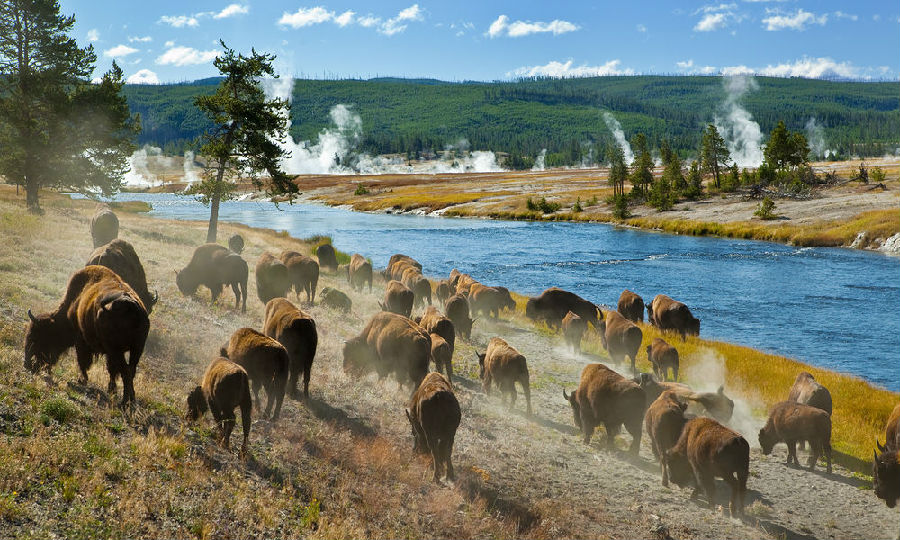Eighty million tons of rock, moving at more than one hundred miles an hour, just fell off the mountain, traveling with such force and momentum that the leading edge of the landslide ran four hundred feet up a mountain on the other side of the valley. Along its path lay part of the Rock Creek Campground. Twenty-eight campers were killed, nineteen of them buried too deep ever to be found again. The devastation was swift but heartbreakingly fickle. Three brothers, sleeping in one tent, were spared. Their parents, sleeping in another tent beside them, were swept away and never seen again.
8000萬噸巖石以每小時160公里的速度從山上崩塌下來,其力量和動量是如此之大,前緣竟然沖到了峽谷對面一座山的120米高處。羅克溪露營園有一部分就在巖石的必經之地。28名露營者死亡,其中19名被埋得太深,再也沒有找到。災難發生得又快又難預測。有兄弟3人同睡一個帳篷,倒是幸免于難。他們的父母睡在旁邊的另一個帳篷,卻被沖得無影無蹤。
A big earthquake—and I mean big—will happen sometime, Doss told me. "You can count on that. This is a big fault zone for earthquakes."
“大地震——我的意思是大的地震——遲早會發生,”多斯對我說,“我可以向你保證。這兒是個大斷層地帶,地震很多。”

Despite the Hebgen Lake quake and the other known risks, Yellowstone didn't get permanent seismometers until the 1970s.
盡管發生了赫布根湖地震以及別的危險,直到20世紀70年代,黃石公園才配置了永久性的地震表。
If you needed a way to appreciate the grandeur and inexorable nature of geologic processes, you could do worse than to consider the Tetons, the sumptuously jagged range that stands just to the south of Yellowstone National Park. Nine million years ago, the Tetons didn't exist. The land around Jackson Hole was just a high grassy plain. But then a forty-mile-long fault opened within the Earth, and since then, about once every nine hundred years, the Tetons experience a really big earthquake, enough to jerk them another six feet higher. It is these repeated jerks over eons that have raised them to their present majestic heights of seven thousand feet.
若要欣賞地質過程的威力和無情,你肯定挑得出比蒂頓山脈更糟糕的例子。蒂頓山脈位于黃石國家公園以南,峭壁嶙峋,非常險峻。900萬年以前,蒂頓山脈并不存在。杰克遜大坑周圍的土地本是一片雜草叢生的高地平原。但是,后來地球內部出現了一處64公里長的斷層,自那以后,大約每隔900年蒂頓山脈就要經歷一次大地震,其威力之大足以使它再升高2米。由于千萬年來這樣反復地往上顫動,如今它的高度已經達到雄偉的2000米。












